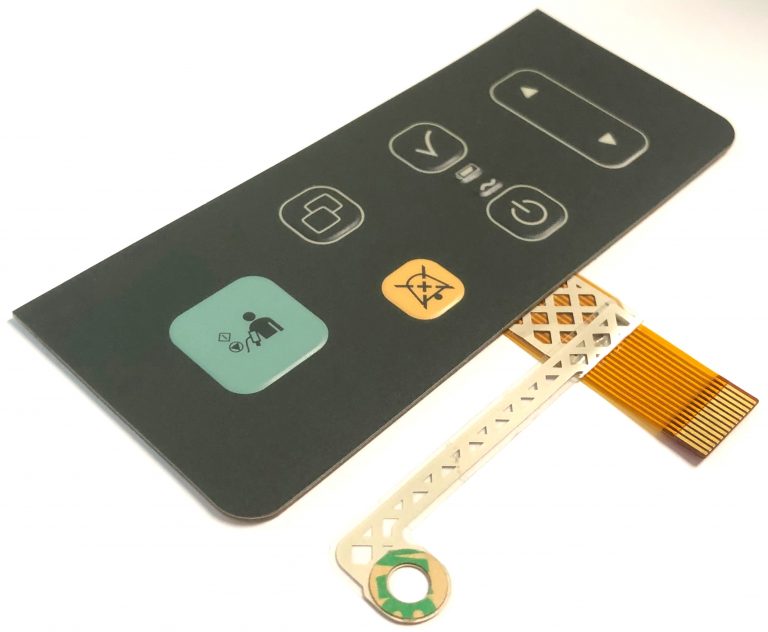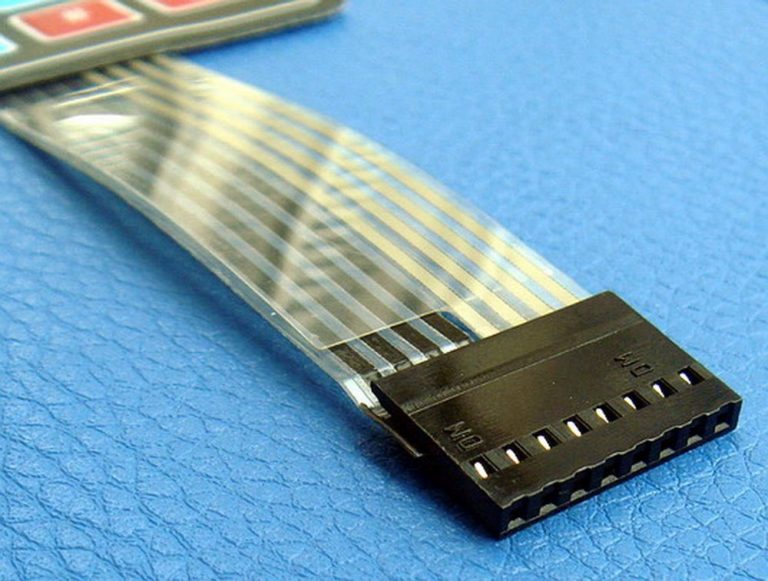Top companies often choose a skilled membrane switch manufacturer to deliver high-quality results.
Top companies often choose a skilled membrane switch manufacturer to deliver high-quality results.
Blog Article
Everything About Membrane Layer Switch: Recognizing Its Layout and Functionality
When you think concerning the control interfaces in modern-day tools, membrane buttons often come to mind. Let's explore what sets membrane layer switches over apart from various other control systems.
What Are Membrane Buttons?

Membrane switches can additionally be personalized relating to shape, dimension, and graphics, enabling manufacturers to create one-of-a-kind user interfaces tailored to specific products. On the whole, membrane switches play a substantial role in improving user experience across a large variety of applications.
Just How Membrane Switches Over Job
When you push a secret on a membrane layer button, it activates a simple yet effective device. membrane switch manufacturer. The top layer, usually made of versatile material, presses down onto a conductive layer beneath it.
You'll notice that the responsive comments varies based on the switch style, supplying either a soft click or a more pronounced response. When you launch the key, the membrane layer go back to its initial position, resuming the circuit and quiting the signal. This procedure takes place nearly instantly, making sure a responsive user experience.
Membrane switches are preferred as a result of their toughness and resistance to dust and moisture, making them perfect for different applications, from family appliances to clinical gadgets. Recognizing this operation aids you appreciate their extensive use.
Secret Parts of Membrane Buttons
Recognizing the vital parts of membrane switches is essential for understanding their functionality and design. The safety layer shields against ecological factors and put on, extending the switch's life-span. By understanding these elements, you'll get insight right into just how membrane switches run and their importance in various applications.
Materials Used in Membrane Layer Change Style
The performance and durability of membrane switches heavily depend on the products utilized in their design. You generally encounter polyester and polycarbonate as main substrates due to their excellent strength and adaptability. These products withstand scrapes and chemicals, making them ideal for demanding environments.
The conductive layers commonly utilize silver or carbon, chosen for their dependability and conductivity. membrane switch manufacturer. Silver offers premium efficiency, while carbon is an affordable alternative. For the overlay, you might consider a matte or glossy finish, depending upon your visual requirements and customer experience
Adhesives play an important function also; they bond layers firmly and guarantee longevity. Make particular to choose adhesives that stand up to ecological aspects like temperature and moisture. Finally, don't overlook the relevance of an excellent printing technique for graphics, as it enhances both functionality and aesthetic allure. Selecting the right materials will certainly guarantee your membrane layer button stands the test of time.
Layout Considerations for Membrane Buttons
While designing membrane layer buttons, it's essential to take into account different factors that influence their capability and individual experience. Begin by focusing on the layout and switch size; make specific they're instinctive and very easy to browse.
Verify your layout suits environmental elements, like moisture or temperature level variations, which could impact performance. By carefully thinking about these components, you'll develop a membrane layer switch that boosts use and complete satisfaction.
Applications of Membrane Switches
Membrane layer switches are flexible elements found in various applications, from commercial equipment to consumer electronics. You'll see their influence in equipments that require durable user interfaces and in tools that gain from streamlined layouts. Recognizing these applications aids you value the capability and practicality of membrane buttons in daily modern technology.
Industrial Equipment Use
When you're looking to boost the capability of industrial devices, membrane switches supply a reliable service that incorporates longevity with easy to use design. These switches are perfect for rough environments, providing resistance to dirt, dampness, and chemicals. Embrace membrane switches to improve your procedures and enhance general efficiency.
Consumer Electronic Devices Combination
In the domain of customer electronic devices, membrane layer switches play a crucial function in enhancing customer interaction and device performance. Membrane switches likewise ensure sturdiness and resistance to dust and moisture, extending the life-span of your electronic devices. By selecting membrane layer buttons, you enhance not just the performance however additionally the design of your tools, making everyday interactions smooth and pleasurable.
Benefits and Downsides of Membrane Layer Buttons
While membrane layer buttons supply a series of benefits, they likewise feature some disadvantages that you need to additional reading consider. One substantial advantage is their portable layout, making them ideal for space-constrained applications. They're also cost-efficient, giving a durable service with a reduced manufacturing price. Furthermore, their smooth surface is easy to clean, boosting hygiene in atmospheres like hospitals.

Nonetheless, there are downsides. Membrane buttons can have a much shorter lifespan contrasted to mechanical switches, particularly under heavy usage. They can likewise be less tactile, which might influence user comments throughout operation. If damaged, repairing them can be difficult and usually calls for total substitute. Ultimately, their sensitivity to severe temperatures this page and environmental problems might limit their effectiveness in certain settings. Stabilizing these pros and cons will aid you establish if membrane layer switches are the appropriate fit for your task.
Frequently Asked Questions
Just How Lengthy Do Membrane Switches Over Generally Last?
Membrane layer changes normally last in between 5 to ten years, depending upon use and ecological conditions. You'll intend to evaluate aspects like wear, direct exposure to moisture, and temperature next level variations to evaluate their longevity successfully.
Can Membrane Switches Over Be Custom-made for Certain Layouts?
Yes, you can customize membrane layer switches to fit specific designs (membrane switch manufacturer). You'll have the freedom to choose shades, shapes, and layouts that match your task's demands, ensuring they blend seamlessly with your overall aesthetic
What Is the Cost Range for Membrane Layer Switch Over Production?
The price array for membrane layer button manufacturing generally falls in between $1 and $10 each, depending on aspects like style complexity, amount, and materials. You can obtain quotes from manufacturers to find the very best choice.

Are Membrane Changes Water Resistant or Resistant?
Membrane layer buttons can be developed to be waterproof or immune, depending upon products used and building and construction approaches. If you need them for wet settings, assure you specify those requirements throughout the layout procedure.
Just How Do Membrane Changes Contrast to Standard Switches?
Membrane buttons are usually thinner and more versatile than typical buttons, using a smooth design. They're often simpler to clean up and incorporate, yet may not offer the tactile responses you're utilized to with mechanical alternatives.
Verdict

Report this page